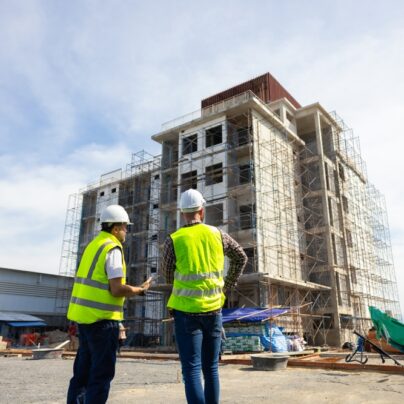Don’t worry, these aren’t a bunch of strange Health and Safety rules for builders under 6ft tall. Hoho! Sorry, couldn’t resist that one.
Bad jokes aside, the ‘small builders’ we’re talking about are contractors undertaking private domestic projects (refurbs, repairs and extensions on private homes) and smaller business projects (short duration repairs and refurbs for business clients, less than 30-day jobs). Is this you? Well here’s all you need to know…
Small Builder Health and Safety Summarised
As the contractor, you have certain responsibilities by law, which vary slightly for each of these two types of project. The law is pretty strong on this because most fatal injuries in construction happen on small building projects! So it’s worth paying attention. Here’s a nice clear run down of what you should be doing. (And see the great list of resources at the bottom for guidance on how to do it all!)
Three Key Areas
- Manage all risks and hazards
- Train and properly inform your workers
- Co-operate with the building owner, or client
One: Managing Risks & Hazards
- Under the Construction Design and Management Regulations 2007 (soon to be updated) you are contractor, and must;
- Plan, manage and monitor the entire job so all H&S risks are controlled
- Set minimum times for planning and preparation
- Make sure people can’t wonder onto the site – protect the public
- Make sure welfare facilities are in place
Two: Training and Informing Your Workers
Your workers have to have all the info and training they could possibly need covering;
- All risks from assessments and required precautions
- Induction and introduction to the site
- Site rules
- All emergency procedures
Three: Co-operating with the Building Owner or Client
A great deal of injuries come from bad communication or co-operation. It’s your responsibility to make sure both are top notch on your construction site, no matter how small.
With Building Owner
Here’s where the ball of H&S responsibility is 100% in your court. The person living in the house or flat has absolutely no responsibility for Workplace Safety. But they certainly have the same interest as you to protect the resident (themselves) from risk during the construction project. So close co-operation and communication is important. This means things like making sure they aren’t put at risk during the work. Or after it – make sure the site is nice and safe at the end of every work day. Share all plans with them and ask for their thoughts too.
With Business Clients
Your business clients do have safety responsibilities themselves, even for the very smallest of projects. So you need to co-ordinate on all the above. For example, if there is a threat on site, like a fragile roof window, then you need to tell the client exactly how you intend to reduce and mitigate that risk to make your workers safe.
Quick Guide Leaflets
Hard hats off to the HSE! They’ve put together some excellent leaflets explaining clearly and quickly how to deal with each H&S risk. Here are the top ones:
Main Take-Aways
- Manage all your risks and hazards
- Train and properly inform your workers
- Co-operate with the home occupier or client on all the site health and safety issues
What Health and Safety challenges do you face as a small construction site builder? Do you have any questions for us? Ask away, we love to talk!


